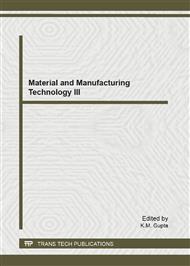p.54
p.58
p.64
p.68
p.73
p.77
p.82
p.87
p.91
The Study on Exchange-Coupled between Nd2Fe14B Hard Magnetic Phase and α-Fe Soft Magnetic Phase
Abstract:
The uniform of the heat treatment process and NdFeB alloy powder metallurgy technology on the α-Fe soft phase effects. Experimental results show that the uniform of the heat treatment process can significantly reduce the α-Fe soft phase of the content, and the thinning, also found that the remaining α-Fe soft phase sintering and after annealing and hard to deal with after the occurrence of magnetic exchange coupling And its magnetic properties can have a greater impact, so this experiment for the Development of the fourth generation of rare earth permanent magnets laid the foundation.
Info:
Periodical:
Pages:
73-76
Citation:
Online since:
July 2012
Authors:
Price:
Сopyright:
© 2012 Trans Tech Publications Ltd. All Rights Reserved
Share:
Citation:


